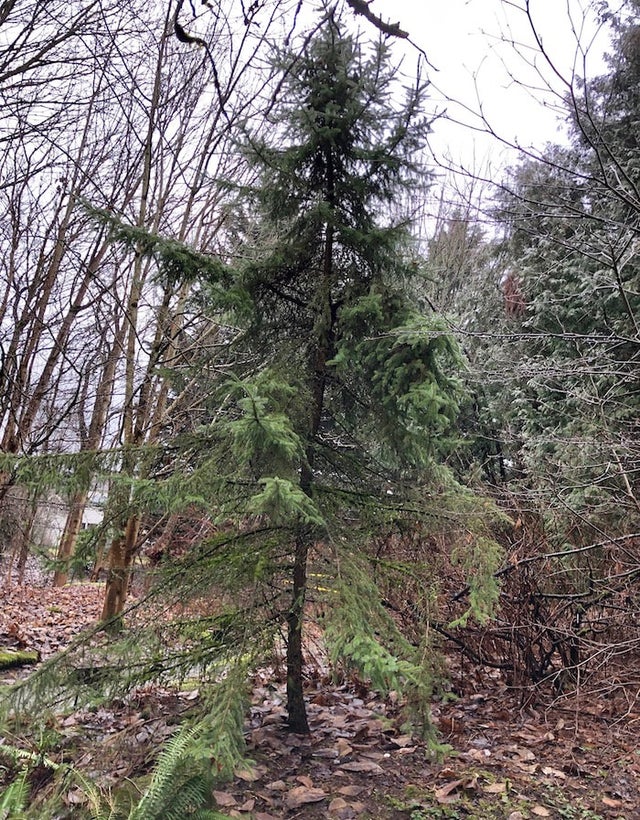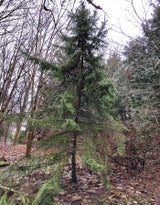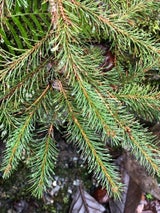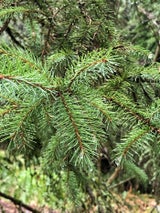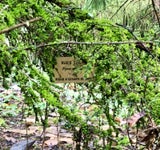- Plant IDs
- >
- ID By Type
- >
- Trees
- >
- Evergreen Trees
- >
- Conifers
- >
- Picea mariana
Picea mariana
Common name: black spruce, epinette noire (French)
Picea mariana is a very cold-hardy, medium-sized evergreen that is often found in wet, boggy areas. It can be found across the boreal region (taiga) of North America. By the way, Canada has 28% of the world's boreal region. P. mariana is a transcontinental species and can be found in all ten of Canada's provinces and all three of its territories.
P. mariana foliage is needle-like, stiff, four-sided, and is a blue-green colour. Each needle is attached individually to the branch rather than in clusters. Black spruce cones are the smallest of all spruce cones. They are about two to three centimetres (one inch) long. They are egg-shaped with stiff scales and purplish-brown in colour. The cones tend to cluster near the crown of the tree. Like other Picea species, they hang downward. P. mariana bark is thin, grayish-brown, and scaly, like potato chips. Black spruce has a shallow, spreading root system, and is susceptible to wind throw (being toppled or uprooted by wind).
P. mariana is the official tree of Newfoundland and Labrador and is that province's most numerous tree. Black spruce is appreciated by wildlife, providing both cover and a food source. P. mariana is harvested mainly for the pulp and paper industry. Due to its long fibres, it makes quality paper products. As well, fast food chopsticks are often made from black spruce.
First Nations used black spruce wood to construct fish traps and snowshoe frames. The roots were used to sew baskets. Black spruce gum, cones, needles, roots, and bark were used medicinally to treat a wide variety of ailments. Black spruce tips are high in vitamin C.
Phillip Miller, an English botanist of Scottish descent, is credited with naming P. mariana. He was head gardener of the Chelsea Physic Garden and authored The Gardener's Dictionary published in 1731. The specific epithet mariana means 'of Maryland'. (B. C. Ministry of Forests)
Picea mariana is located in Bed 135B of the Canadian Heritage Garden across the path from the Jack Pine (Pinus banksiana).
Text and photos by Kumi Sutcliffe
